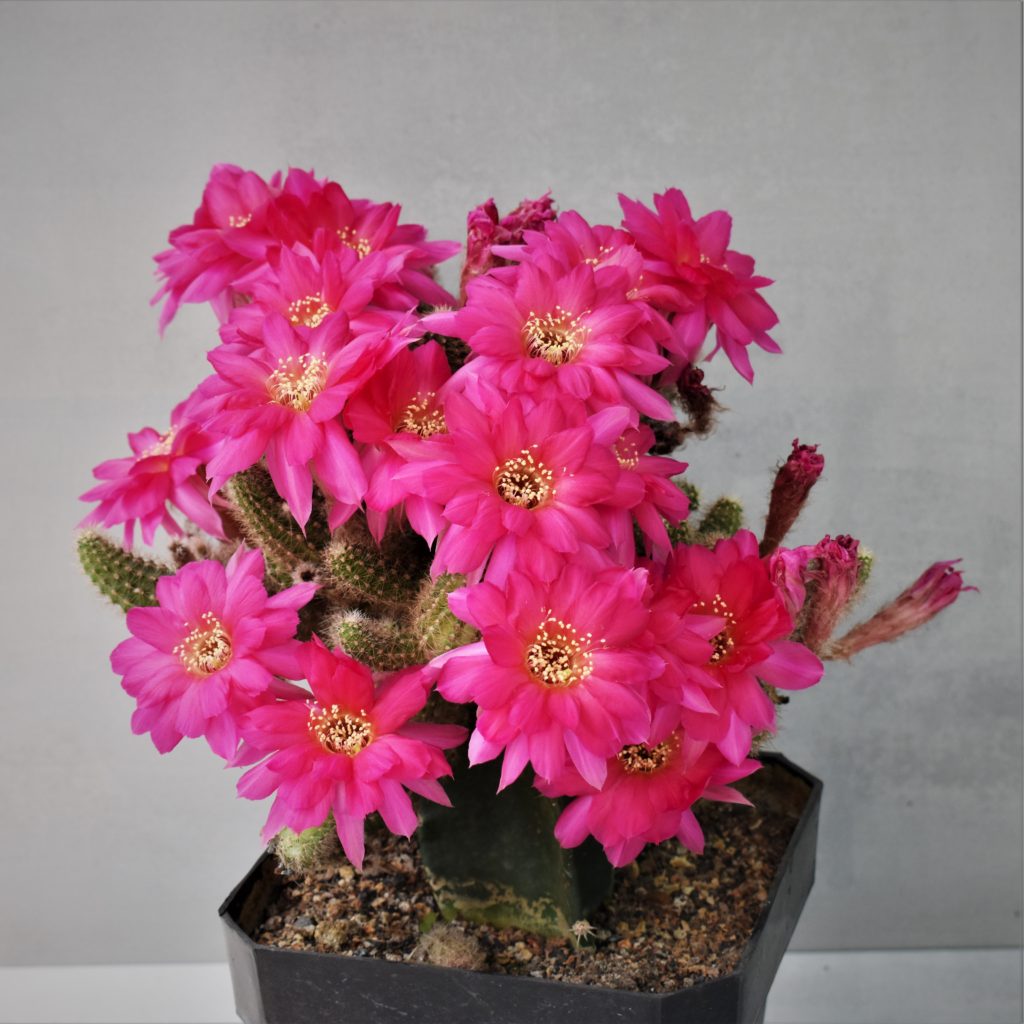
Very often I come across a question, “Are grafts Good?” And my answer is always the same, “Depends upon which side of the table you are. They most certainly facilitate!”

Well, on a serious note, one cannot always categorize something as Black or White. There is always a reason for people’s choice. So, without generalizing let us explore certain aspects from growers’ point of view.

What is grafting? Grafting in cactus simply means to slice and join two cacti in such a way that the vascular bundles (Xylem and Phloem) of the two plant pieces are joined so that they can conduct water, minerals, sugar and organic nutrients to each other. We take a well-established plant (Stock or Root Stock, as it is called) and attach to it a tiny or suitable sized piece of a plant which we want to propagate (Scion). If grafted successfully this tiny piece starts growing and becomes a larger plant. Since it is not a natural procedure and an invasive one at that, it needs to be executed in such a way that no fungal or bacterial infection arises at the site, at time of grafting.
How to graft? This is a separate subject but one should know that techniques are based on requirement of outcome, weather conditions / climate and availability of stock.
Why do we graft?
Grafting is done out of a necessity. It is usually not done to just prop up a cactus and give it an elevated view.
Grafting helps us to: –
- Create more plants in a lesser time frame by using tiny bits and pieces of parent plant.

- Infected plants can be rescued or revived by taking a clean piece of non-infected tissue and grafting it.
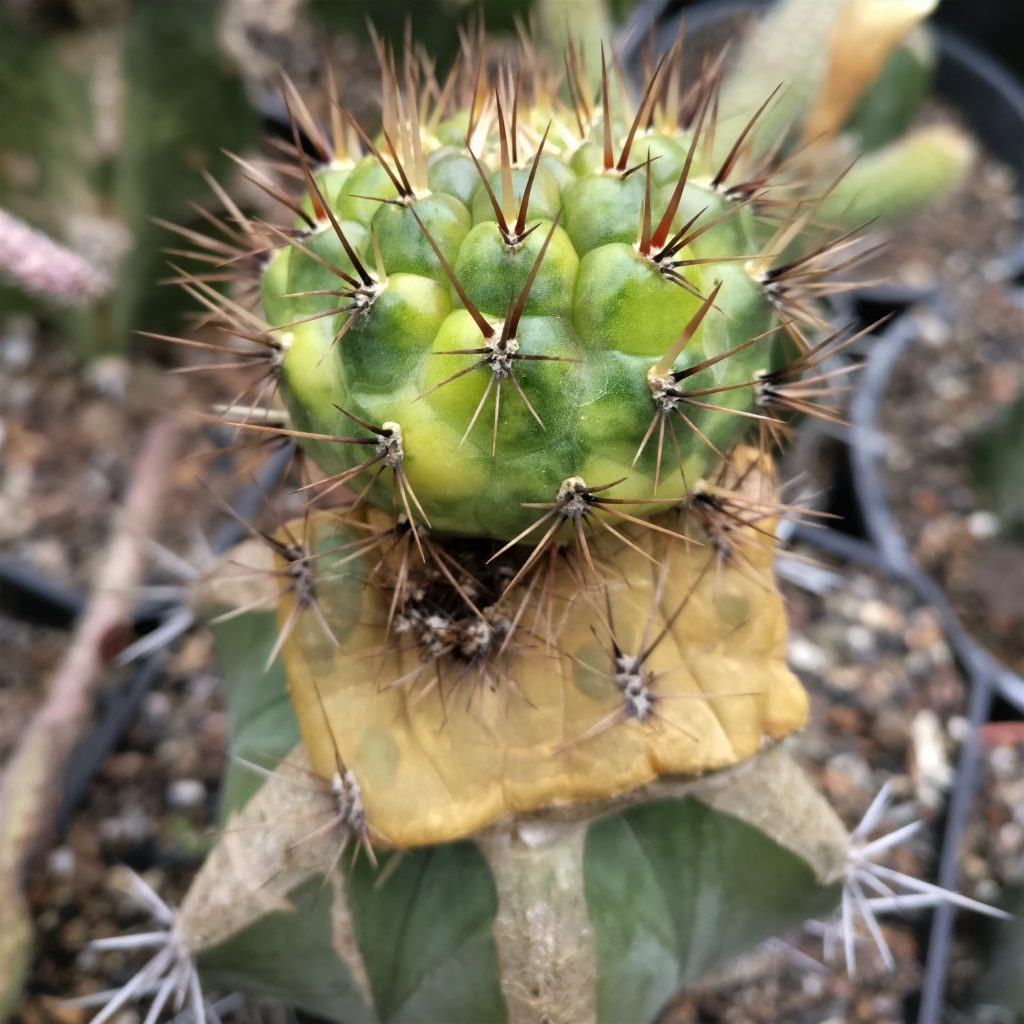
- Grafted plants grow fast and mature early as they have a ready supply of food from an established plant having a good root system.
- Grafted plants have more energy and vigour and thus flower more profusely and yield better quality of flowers.
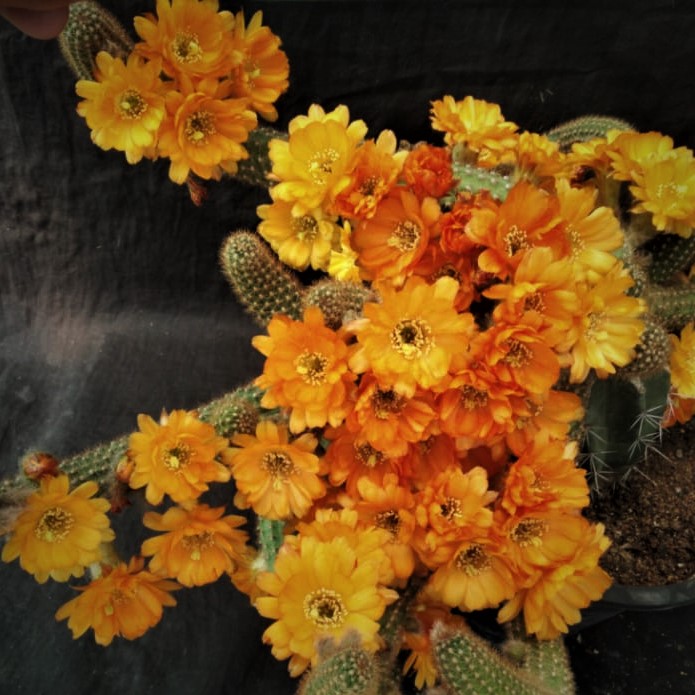
Lemaireocereus sp produces copious flowers as against rooted plants
- More flowers mean more chances of selective pollination and production of larger amount of seeds plus more opportunities for creating desired hybrids or Crosses.

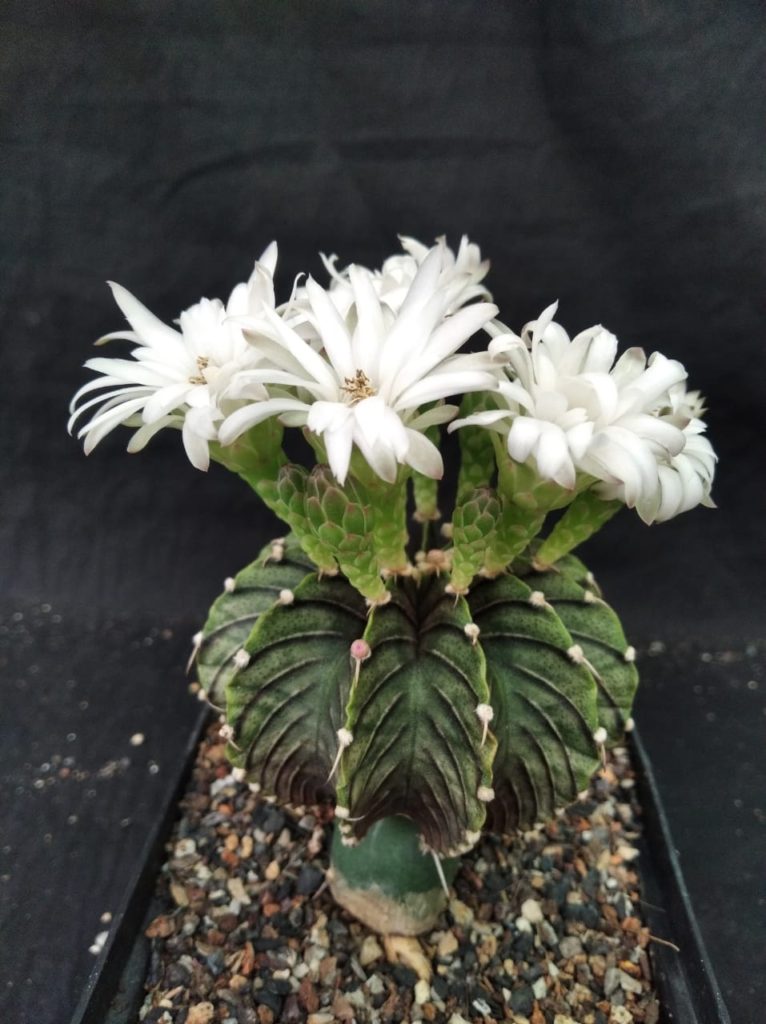
Gymnocalycium friedrichii lb 2178 ‘ agua dulce grafted over Harrisia jusbertii
- Variegated plants can be and need to be propagated on grafts because they lack adequate amounts of chlorophyll. Grafting enhances speed of growth and flowering.
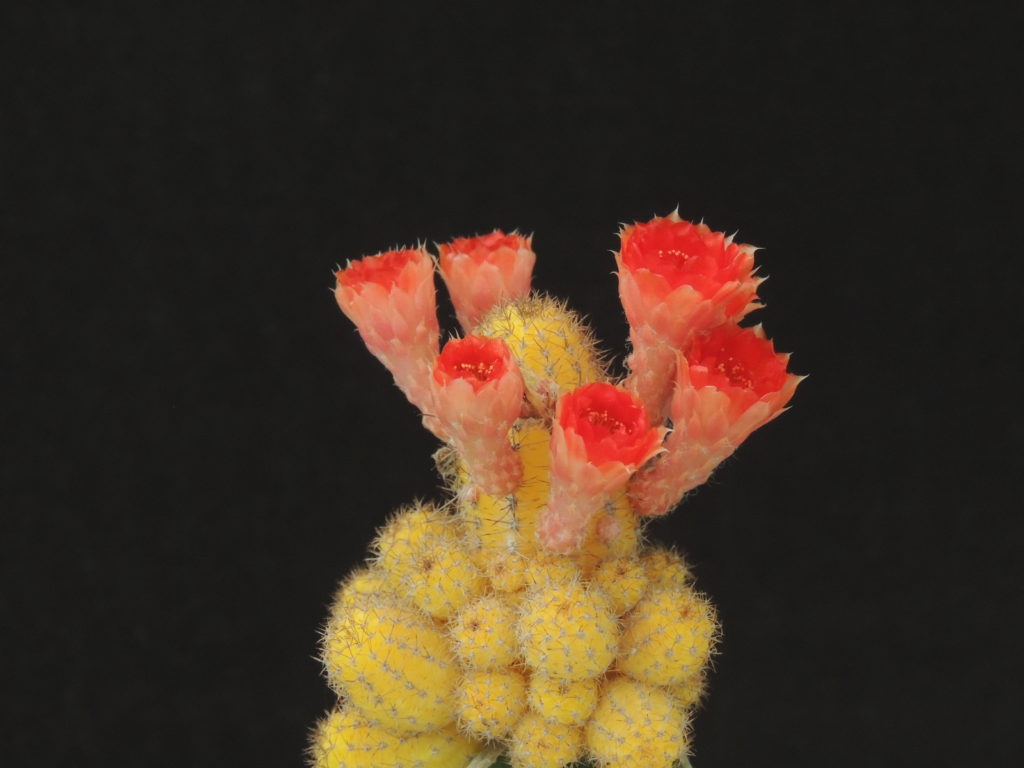
Having seen the advantages of grafting, let’s see why people insist on saying grafted plants are not good. Personally, it is a wrong choice of words. What mostly people mean is that you cannot treat a grafted plant the same way as a seed grown plant and all the different types of root stocks cannot be universally be expected to behave in similar manner in a given set of conditions.
Aesthetics: The scion is elevated on a stock plant which can be 2 to 20 inches or even much more high. This spoils the beauty of plant which is grafted. Well, this is a question of aesthetics so any view on this is subjective. If aesthetics and patience are a major issue, then you can go in for following options: –
- Plants grafted using very short Periskiopsis or Hylocerous stock.
- Either purchase or make plants on very short graft, i.e., about 2 inches. Stock can be buried so that it looks like a normal seed grown plant. The stock will not rot. Even if it rots, usually the rot will not spread to the scion and after some time root initiation from remaining stock or scion or both will take place.
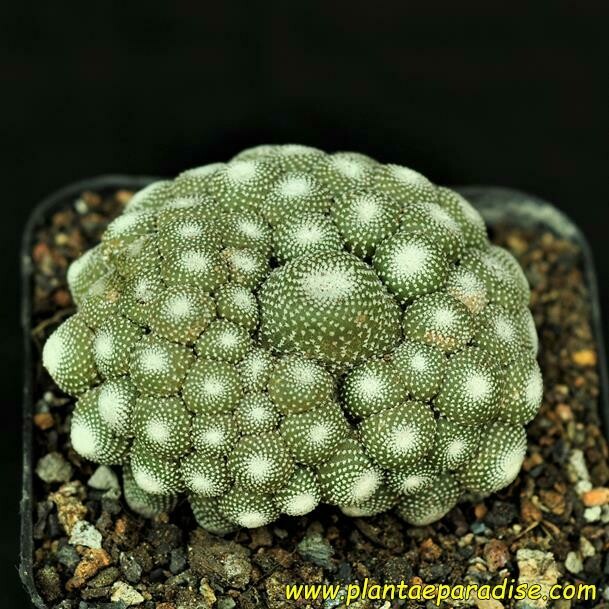

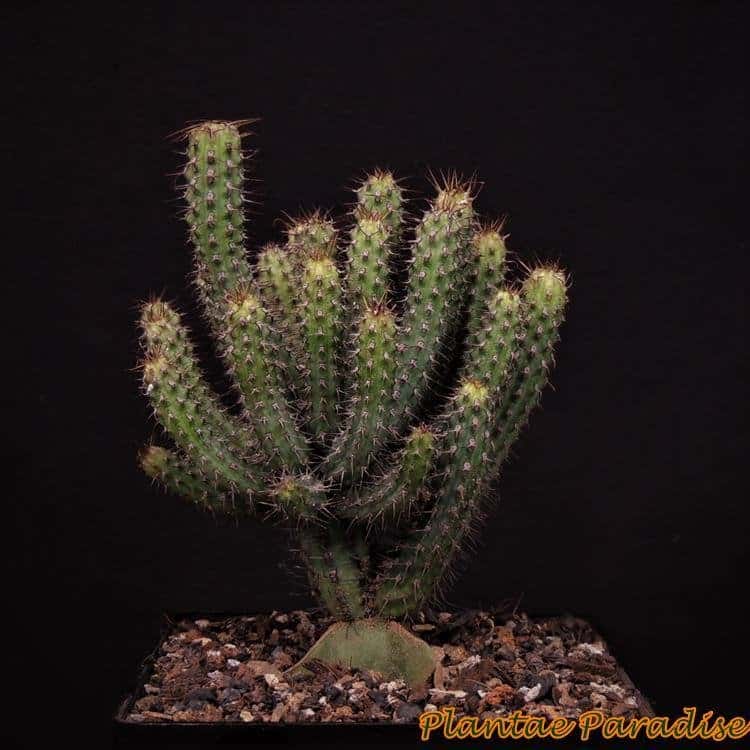

Euphorbia baioensis grafted on Euphorbia hermentiana : Both capable of quick rooting !
Plants grafted using normal length Periskiopsis or Hylocerous stock.
- In case of Periskiopsis, simply cut 2 inches below the graft joint and bury it in moist media. The Periskiopsis will soon root. If this is done in monsoons / warm months, then the rooting is faster and profuse. The Scion then grows at a rapid pace and looks like a normal seed grown plant.
- In case of Hylocerous, the same can be done. However, in this case remove the green tissue around the vascular bundle, dry it for a day or two and then root it in moist media. Rooting quickly initiates and the Scion then grows at a rapid pace and looks like a normal seed grown plant.
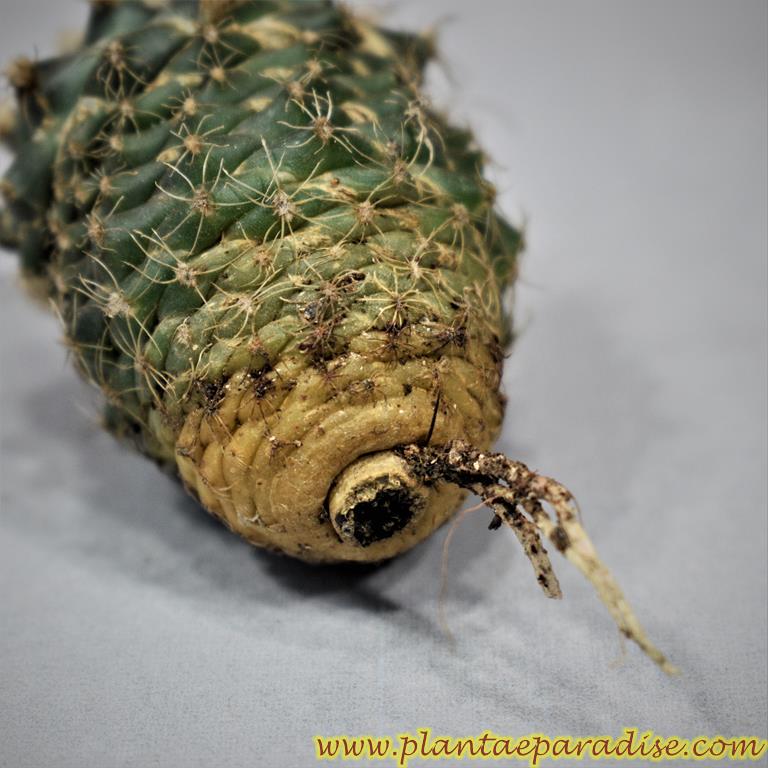
- Aesthetics vs Practical approach on other stock :-
- Periskiopsis. Although young grafts look very good, say upto the age of 8 to 12 months, thereafter the stock starts to loose leaves and tends to dry up. So it is not a permanent stock and looks ugly after an year or so.
- Myrtillocactus geometrizans. Straight short pieces look good and last. However, the skin is prone to spots and marks which can be due to spine injury or scale. It is difficult to find a neat clean piece.
- Hylocereus undatus. This light green coloured stock looks friendly as it does not have spines but again it is of short life stock as it may bend over due to weight of scion.
- Harrisia jusbertii. This dark green short spined stock is tough and handsome and can be grown in various thickness and lengths suitable for grafting. Grafts and stock remain beautiful for a long time.
- Lemaireocereus pruinosus. Strong and sturdy, grows straight. Can handle big scions gracefully. Long lasting, ie, can carry a scion for 5 to 6 years. Looks good for along time.
- Weather Vulnerability It is seen that some stocks in North India just do not do well. They can be susceptible to extreme heat, heavy monsoons and high humidity and extreme cold. Let’s see which stock augers well for us:-
- Acanthocerous sp. This is the most preferred stock with growers living in MP, Maharashtra and South. Often it is found growing on roadsides. So, cuttings for grafting can be directly obtained from mother plants growing on roadside. Spines are less so handling is easy. After successful grafting the Scion grows very fast. It would be correct to say that this is perhaps one of the fastest root stock. Most commercial nurseries prefer this root stock for ease of propagation of Root stock and for speed of growth of Scion.
- In the Northern parts of India, this root stock is dormant for an exceptionally long spell in winters. As summer approaches and temperatures go up this stock shows fresh growth. In summers it requires consistent watering. Sometimes, root infestations cause this stock to shrink and become bone dry, almost to a crisp state in just a matter of a week. This happens when roots are infected, coupled with no water supply and heavy demand of scion for supplies. Another aspect which is noticed in summers is that this stock sometimes kind of forms a thick tuber type of a tap root which starts storing food and water. The top part of the plant then starts to shrink and cannot meet the demand of scion and thus weakens the whole combination of stock and scion.
- Any overwatering in monsoons is sure to lead to root rot and death of stock and scion at a very rapid speed.
- In winters, more of these stocks are seen to die out than in comparison with other stocks.
- So, I would opine that Acanthocerous is not suitable for North Indian climes.
- Hylocerous undatus. It has low cold tolerance. Can stand mild overwatering. Suitable for South Indian conditions.
May suddenly rot in North Indian winters. - Periskiopsis. All rounder upto a limited age. Likes overwatering. Can stand cold and tough summers.
- Myrtillocactus geometrizans . Can safely say it is happy in all Indian weather conditions. Does go for long dormancy in winters in North but can tolerate winters.
- Harrisia jusbertii. Most winter tolerant among all of the stocks we have used or considered. Can become dormant and slow in high heat conditions.
- Lemaireocereus pruinosus. Ideally suited for North Indian extremes. However, it does not take well to overwatering. Good cold tolerance.
- Acanthocerous sp. This is the most preferred stock with growers living in MP, Maharashtra and South. Often it is found growing on roadsides. So, cuttings for grafting can be directly obtained from mother plants growing on roadside. Spines are less so handling is easy. After successful grafting the Scion grows very fast. It would be correct to say that this is perhaps one of the fastest root stock. Most commercial nurseries prefer this root stock for ease of propagation of Root stock and for speed of growth of Scion.
- Disease vulnerability
- Acanthocerous sp It is actually disease resistant, if grown in suitable weather. Less prone to scale. Does not need frequent anti fungal sprays.
- Periskiopsis. Disease resistant.
- Myrtillocactus geometrizans. Pretty resistant to fungal attacks. However, scale insect particularly likes this plant.
- Hylocereus undatus. Vulnerability to Viral and Fungal diseases is very high in cold temperatures.
- Harrisia jusbertii. Amazingly comfortable to work with. Tough stock not prone to fungal or bacterial rot.
- Lemaireocereus pruinosus. Rot resistant. Less vulnerable to scale than Myrtillocactus. Sometimes smut type fungal rot which is localized may appear in winters.
- Ease of degrafting . This term is basically used to imply successful rooting of scion after de-grafting. Well, rooting is a function of scion and not the stock. However, successful rooting of a de-graft implies that the stock tissue or vascular bundle of stock is not present in the scion after separating the two. Therefore, one must scoop out the vascular bundle or hard core out from the scion just above the joint. This may leave a concave portion which will fill out with roots later. If the graft is old and the stock has a large vascular bundle as in case of Lemairocereus than the degrafting is a bit tricky as you may have to scoop out a larger portion from the base of scion.
- Rooting of Degrafts . There is no magic wand for rooting of degrafts. First thing you need is patience and second is the right kind of medium. The medium should be such that it retains moisture, just the right quantity, not too much and not too less. Should not have organic material which encourages bacterial or fungal activity. Rooting depends upon the temperature and humidity. All you have to do is keep the plant disease free and alive in the media while it develops roots. Remember that the roots of degrafts may not be typical tap roots as in original seed grown plants but many small fibrous roots. Incidentally, these fibrous roots have more surface area and thus facilitate better growth in the plants. Also, they tend not to store food in tap root thus making a bigger plant body. For this very reason, many growers here and overseas snip off the tap root of Astrophytum asterias while transplanting. Thus, in both cases the plant develops fibrous root system.
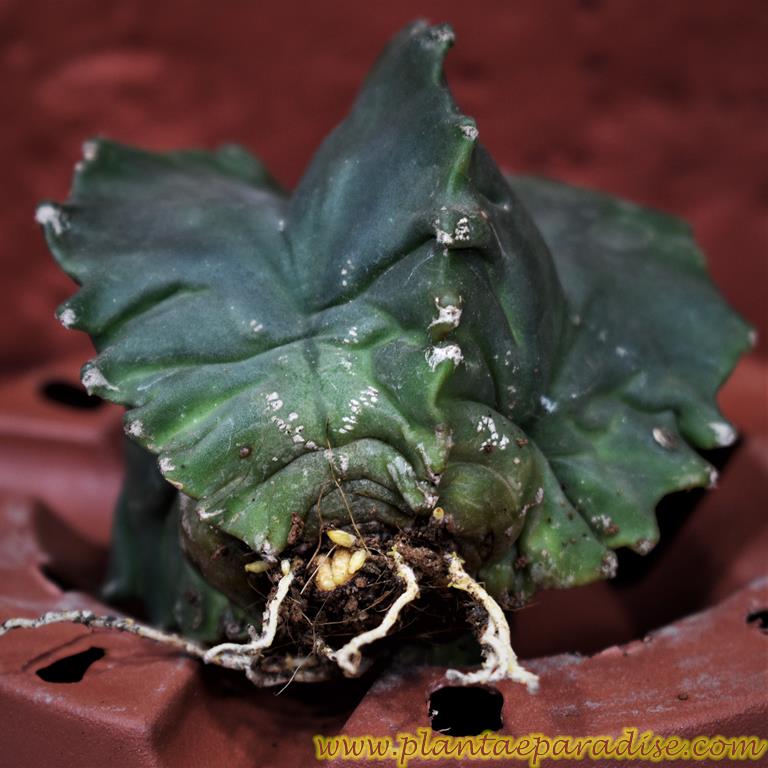
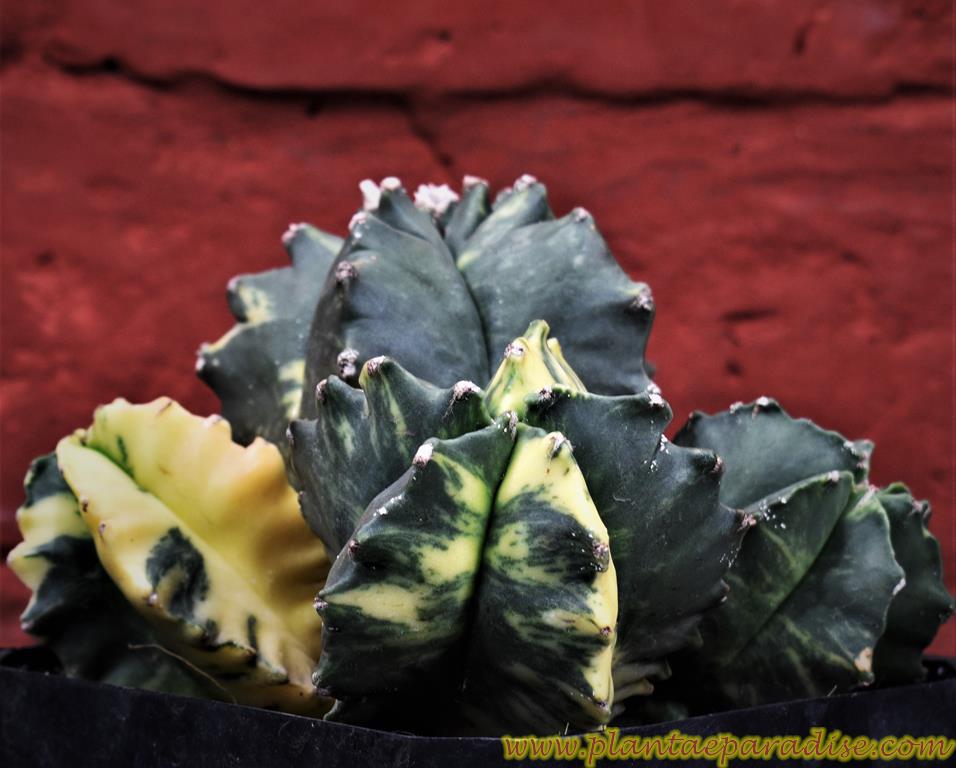
Now I leave it to you to judge if grafts are good or bad!
Fantastic in-depth article on grafting .
A must read for all cactus people.
Every aspect is included in detail, really appreciate. Big wala Thanks.
Very elaborate and informative article on the topic, useful for enthusiasts and newbies both.
Excellent article sir.. Almost every situation is covered well.
The description is outstanding, this will help a lot of peoples